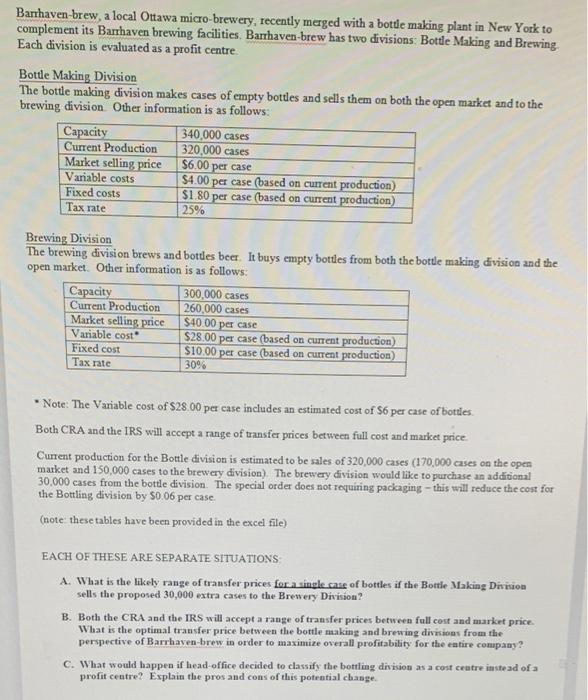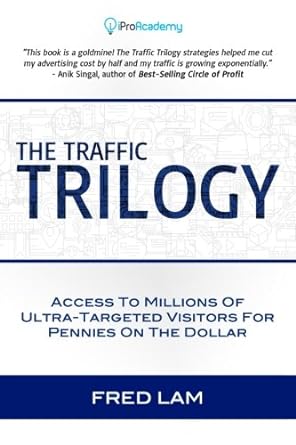Barthaven-brew, a local Ottawa micro-brewery, recently merged with a botde making plant in New York to complement its Barrhaven brewing facilities. Barrhaven-brew has two divisions Bottie Making and Brewing Each division is evaluated as a profit centre Bottle Making Division The bottle making division makes cases of empty bottles and sells them on both the open market and to the brewing division Other information is as follows: | Capacity 340,000 cases Current Production 320,000 cases Market selling price $6.00 per case Variable costs $4.00 per case (based on current production) Fixed costs $1.80 per case (based on current production) Tax rate 25% Brewing Division The brewing division brews and bottes beer. It buys empty bottles from both the bottle making division and the open market. Other information is as follows: Capacity 300,000 cases Current Production 260,000 cases Market selling price $40.00 per case Variable cost $28.00 per case (based on current production) Fixed cost $10.00 per case (based on current production) Tax rate 30% Note: The Variable cost of $28.00 per case includes an estimated cost of $6 per case of bottles Both CRA and the IRS will accept a range of transfer prices between full cost and market price Current production for the Bottle division is estimated to be sales of 320,000 cases (170,000 cases on the open market and 150,000 cases to the brewery division). The brewery division would like to purchase an additional 30.000 cases from the bottle division. The special order does not requiring packaging - this will reduce the cost for the Bottling division by 50.06 per case. (note these tables have been provided in the excel file) EACH OF THESE ARE SEPARATE SITUATIONS A. What is the likely range of transfer prices for a single case of bottles if the Bottle Making Division sells the proposed 30,000 extra cases to the Brewery Division? B. Both the CRA and the IRS will accept a range of transfer prices between full cost and market price What is the optimal transfer price between the bottle making and brewing divisions from the perspective of Barrhaven brew in order to maximize overall profitability for the entire company? C. What would happen if head office decided to classify the bottling division as a cost centre instead of a profit centre? Explain the pros and cons of this potential change







